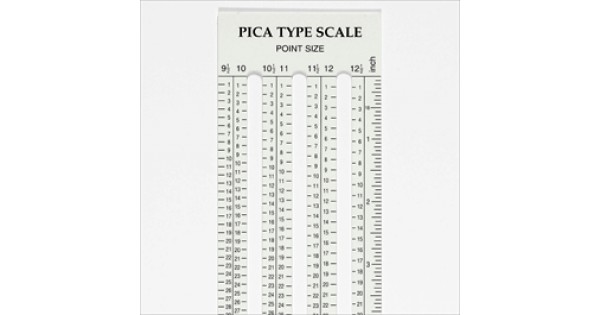

This may take multiple attempts until you get the right combination of typeface, point size, leading and column width that will accommodate all of the copy within the space available. Any of these modifications require starting over using the CPI for the new font/point size and using a different scale on the Haberule. If you discover that the point size of the font with which you just performed your calculations runs too long, go back and either increase your column width, decrease your point size or choose a different font altogether – or some combination of the three. Once you know the number of lines that your copy will run, use the scale on the type gauge that corresponds to the point size of the font you are using (including leading*) to see the depth to which that number of typeset lines will fall. Knowing the number of typeset characters per line, based on the CPI of your particular font and point size, divide that number into the total number of characters in the entire manuscript to determine how many lines the copy would run when set. (By the way, there were no practical pocket electronic calculators 4 decades ago to do the math for you.) (Elite and Pica being the two styles of type on typewriters of the day.) Then multiply that number by the number of lines in the entire manuscript – whether 1 page or 100 – to get the total number of characters.īack then, each type foundry’s font catalogue provided a CPI number (characters per inch) which let you calculate how many characters of a particular font at a given point size would fit on a single line of text within your column width. Determine the amount of copy to be setīy using the elite or pica scales on the left edge of the Haberule determine the number of characters – and spaces – in an average line of the client’s typewritten manuscript. Before 1884, no newspaper in the world had more than eight pages.ġ. The Linotype machine revolutionized newspaper publishing, making it possible for a small number of operators to set type for many pages on a daily basis. The process was improved in the late 1800s by Ottmar Mergenthaler who invented the Linotype machine that could produce an entire line of metal type at once – hence a line-o’-type. Practically all text composition was derived from Gutenberg’s movable-type printing press, often regarded as the single most important invention of the second millennium. Just 40 years ago, pages of words were composed nearly the same way they were 5 centuries ago….by manually assembling each word, sentence and paragraph with individual pieces for each letter, space and punctuation mark.

With so many ways to manipulate the characteristics of the type, and instantly see the results, it’s hard to imagine the calculations and time demands that were required to accomplish something as simple as changing the width of a text column – let alone the font, point size or leading in a paragraph – when the typesetting process involved atoms rather than bits. Using our computers we can not only effortlessly change point size and leading in fractions of a point, but also track and kern letter or word spacing in thousandths of an em and even condense the width of a font (or individual character) by any percentage we choose.


 0 kommentar(er)
0 kommentar(er)
